Gardening is a wonderful way to connect with nature, nurture life, and create a little green haven right in your backyard. If you’ve ever tried your hand at gardening, you might have come across the concept of companion planting.
It’s a clever gardening practice that involves growing specific plants together to help each other grow better, keep pests at bay, and generally flourish.
In this gardening journey, we’ll delve into the world of companion planting, focusing on parsley. Without further ado, let’s discuss parsley companion plants and learn which plants NOT to plant nearby.
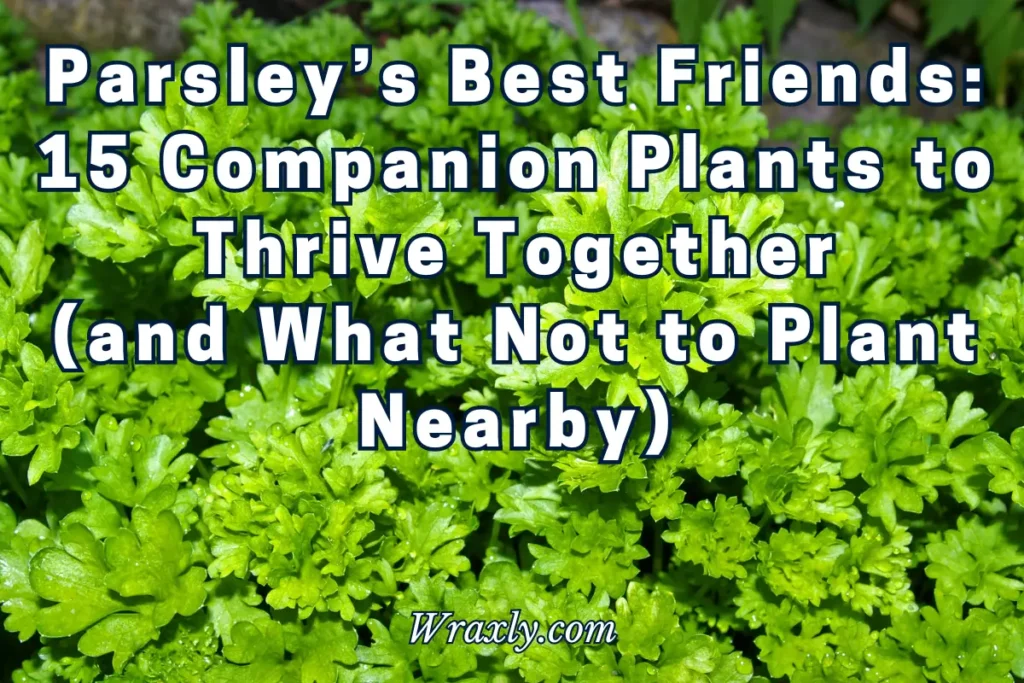
Why Plant Parsley?
With its vibrant green leaves, parsley is a staple in many herb gardens. It’s not just a versatile herb for seasoning dishes; Parsley also offers many benefits to your garden’s ecosystem.
One of the fantastic advantages of planting parsley is its ability to deter certain pests. While parsley may be a culinary delight to us, it’s a pest-repelling powerhouse in the garden.
Parsley’s strong scent and oils help keep unwanted insects like aphids, asparagus beetles, and carrot flies away from your garden.
Parsley Companion Plants: 15 Excellent Matches
Companion planting with parsley is a win-win strategy. Pairing parsley with other plants that can benefit from its pest-repelling qualities is a good idea and provides some assistance in return.
1. Tomatoes
Tomatoes and parsley make excellent neighbors. Parsley helps protect tomato plants from those pesky tomato hornworms, while tomatoes offer some shade, which parsley appreciates during the hottest parts of the day. See also: Mastering the Art of Growing Cherry Tomatoes in Pots
2. Roses
Yes, roses and parsley can get along beautifully in your garden. Parsley deters the dreaded rose beetle, which often makes a feast of rose petals. This partnership results in healthier, pest-free roses. See also: 4 Quick Tips for Growing Roses in Pots
3. Chives
When it comes to parsley companion plants, chives and parsley are the dynamic gardening duo you need in your garden. These green allies work in perfect tandem, naturally protecting each other by deterring aphids, carrot flies, and Japanese beetles from your garden. And here’s the fantastic twist: their collaboration doesn’t end in the garden. When you use them together in your culinary adventures, they naturally boost each other’s flavors, adding an extra layer of delight to your dishes.
4. Corn
Corn and parsley create a harmonious relationship. Parsley keeps corn’s nemesis, the corn worm, at bay, ensuring your corn thrives without the interference of these pests. See also: Growing Corn in Grow Bags
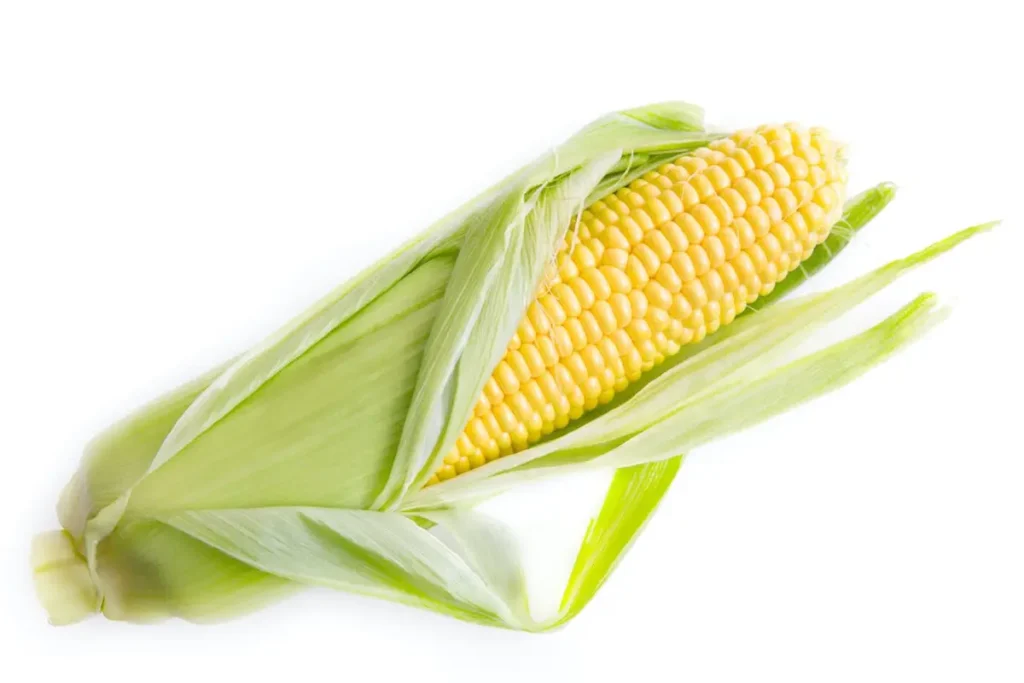
5. Peas
Peas and parsley also thrive together. Parsley’s pest-repelling properties are beneficial for peas, while the peas offer structural support for the parsley, keeping it upright in gusty conditions.
6. Basil
Parsley and basil create a delightful garden partnership. They help each other ward off common garden pests, and the best part is they make your dishes even more delicious when used together in cooking. See also: Spices, Herbs, and More: Foodies Guide to Container Gardening
7. Marigolds
Marigolds have pest-repelling properties. When planted alongside parsley, they help deter aphids, nematodes, and other harmful insects that can damage parsley plants.
This combination not only keeps parsley healthy but also adds a burst of color and diversity to your garden.
8. Zinnias
With their bright and cheerful colors, Zinnias aren’t only pleasing to the eye but also attract beneficial pollinators like butterflies.
When planted alongside parsley, they create a lively and harmonious environment that’s good for your whole garden.
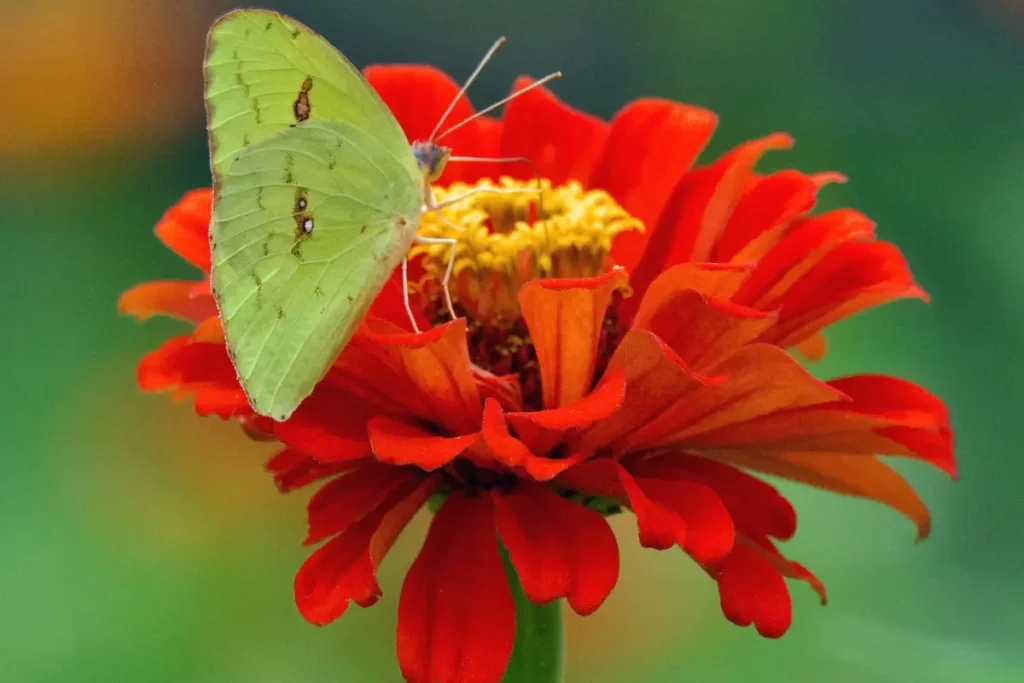
9. Rosemary
When seeking ideal parsley companion plants, look no further than the delightful combination of rosemary and parsley. These two herbs create a harmonious gardening partnership that naturally safeguards your garden. Rosemary, with its aromatic leaves, acts as a natural deterrent to pests that might trouble your parsley, keeping your garden thriving. Moreover, the enchanting fragrance of these herbs elevates your overall garden experience, making it a sensory delight for both you and your plants.
10. Radishes
Parsley and radishes are a dynamic duo. Radishes grow quickly and can be harvested before they overshadow the parsley, making them excellent companions.
11. Zucchini
Zucchinis and parsley create a garden synergy. Parsley can help deter pests commonly affecting zucchini plants, such as cucumber beetles. The result is a thriving zucchini crop with the assistance of its aromatic companion. See also: Why is my Zucchini Turning Yellow?
12. Nasturtiums
Nasturtiums are like the lively friends of parsley. They not only add vibrant color to your garden but also help keep aphids and other pests away.
13. Peppers
Peppers and parsley make great garden companions. Parsley’s aromatic qualities can help deter pests that may harm peppers, and its shade can protect the soil around pepper plants.
This partnership not only promotes the well-being of both plants but also adds variety and flavor to your garden’s produce.
14. Asparagus
Growing parsley next to asparagus is a good idea. Parsley can keep away pests that bother asparagus, helping to protect it.
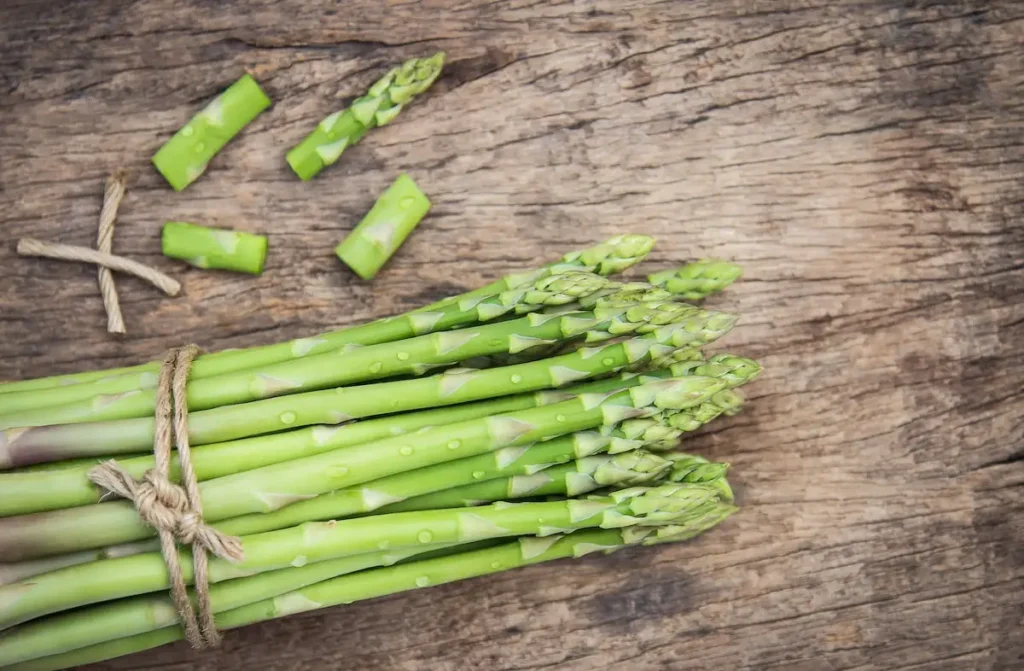
Both parsley and asparagus have different needs so they won’t fight for the same things in the soil. This teamwork can make your garden more diverse and healthier.
15. Beans
Planting beans next to parsley is a smart choice. Parsley can help beans by keeping some pests away.
The two plants don’t fight for the same things, so they grow well together, making your garden more lively and diverse.
What NOT to Plant Nearby
While parsley is friendly with many plants, there are some plants you should avoid planting nearby.
1. Mint
Mint is a bit of a bully in the garden and can take over, even overshadowing parsley. It’s best to keep these two apart.
2. Dill
Parsley and dill don’t make the best companions. They compete for nutrients and don’t quite thrive when grown side by side.
3. Alliums
Alliums, like onions and garlic, can stunt the growth of parsley. Keep some distance between them for both to flourish.
4. Carrots
Carrots and parsley aren’t good friends in the garden because they both attract the same pests and fight for the same plant nutrients. Also, they can mix up their seeds if you’re not careful. It’s better to plant them apart to help them grow better.
5. Fennel
Parsley and fennel should be kept apart. Fennel can inhibit the growth of nearby plants, including parsley, and they may compete for space and nutrients.
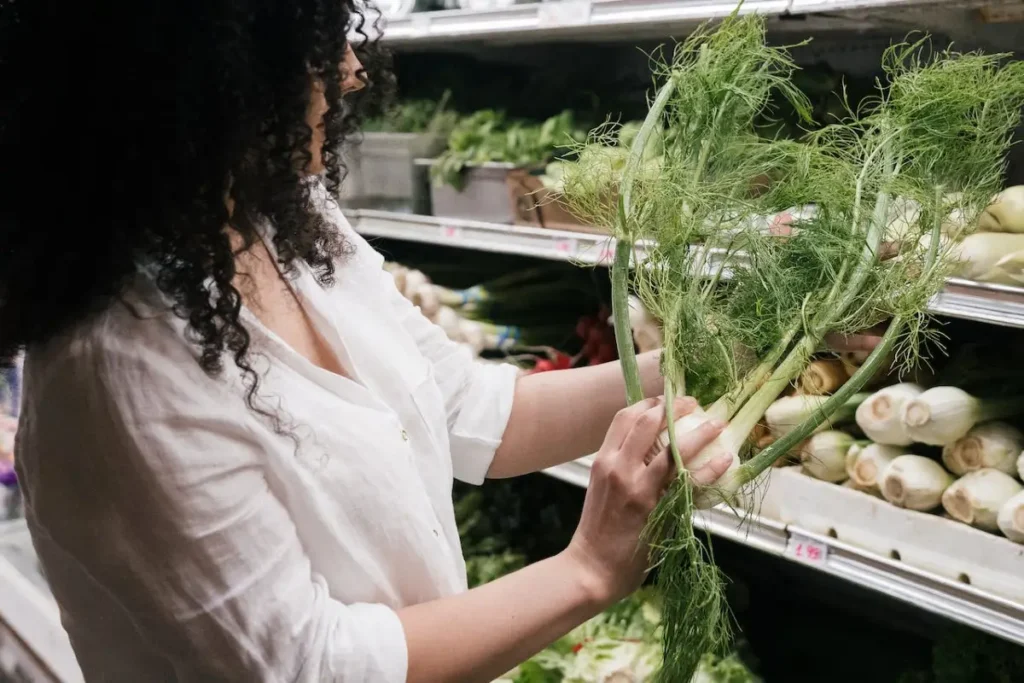
6. Lettuce
Lettuce and parsley usually don’t grow well together. Sometimes, parsley makes lettuce go to seed too early.
So, it’s better to keep them apart in your garden for healthier plants. This way, you can enjoy both lettuce and parsley without any issues in your garden.
Additional Tips for Beginners
The following tips can help parsley enthusiasts grow parsley successfully:
1. Spacing for Success
While parsley’s pest-repelling qualities can benefit many garden friends, it’s essential to provide adequate spacing between plants to allow them to grow healthily.
Crowding can lead to competition for sunlight, nutrients, and water. For the best results, create a well-thought-out garden layout that considers the space each plant needs to thrive.
2. Soil Preferences Matter
Each plant has its own soil preferences, and understanding them is key to successful companion planting.
Parsley thrives in well-drained soil with moderate fertility. Make sure to match the soil needs of parsley with its companions to avoid any potential issues.
Companion Planting Success Stories
Let’s explore some stories that illustrate the benefits of companion planting with parsley.
1. The Basil and Parsley Pair
Basil and Parsley make a fantastic team. When grown together, they help each other thrive and deter common garden pests. Plus, the combination of their flavors adds a delightful touch to various dishes in the kitchen.
2. The Zinnias and Parsley Duo
Zinnias are colorful flowers that not only add beauty to your garden but also attract pollinators like butterflies. When planted alongside parsley, they create a lively and beneficial ecosystem.
3. The Marigold and Parsley Connection
Marigolds have pest-repelling properties. When paired with parsley, they form a protective shield against various garden pests, creating a healthier and more vibrant garden.
Promoting a Sustainable Garden
Companion planting with parsley and other compatible plants offers more than just improved growth and pest control. It can contribute to a sustainable and eco-friendly garden:
1. Biodiversity
A diverse garden is a resilient one. By embracing companion planting, you’re enhancing biodiversity in your garden, which can deter the overpopulation of specific pests and diseases. See also: Green Gardening for Eco-Warriors: Sustainable Container Gardening Tips
2. Reduced Chemical Use
Companion planting can reduce the need for chemical pesticides and herbicides. Natural pest-deterrent plants like parsley, marigolds, and nasturtiums can help maintain a healthy balance in your garden.
3. Soil Enrichment
The interplay between different plants can improve soil health. As nitrogen-fixing plants like beans enrich the soil, they enhance its fertility and reduce the need for synthetic fertilizers.
4. Water Efficiency
Companion planting can optimize water use by grouping plants with similar water needs together. This reduces water waste and supports responsible water management.
Garden Harmony and Aesthetic Appeal
Companion planting isn’t just about the practical benefits; it’s also about creating an aesthetically pleasing garden.
Combining diverse plants with varying colors and growth habits can make your garden a visual masterpiece.
Final Thoughts on Parsley Companion Plants
When you carefully plant parsley alongside other compatible plants, your garden becomes a bustling ecosystem where each plant helps the others. This isn’t just about gardening; it’s about connecting with nature.
As you choose the right plant buddies and learn how they work together, you’re not only taking care of your plants but also becoming more in tune with the natural world. This way of gardening doesn’t just make your garden better; it also helps the environment.
As you venture into companion planting, you’ll discover a world of possibilities.
By trying different combinations and creating a diverse and balanced garden, you’ll see how plants can work together to turn your outdoor space into a beautiful and lively oasis.

Darrell has a passion for gardening that he inherited from his father. Go here to read more about the influence his father played in his love for gardening. If you want to send Darrell a quick message, then visit his contact page here.

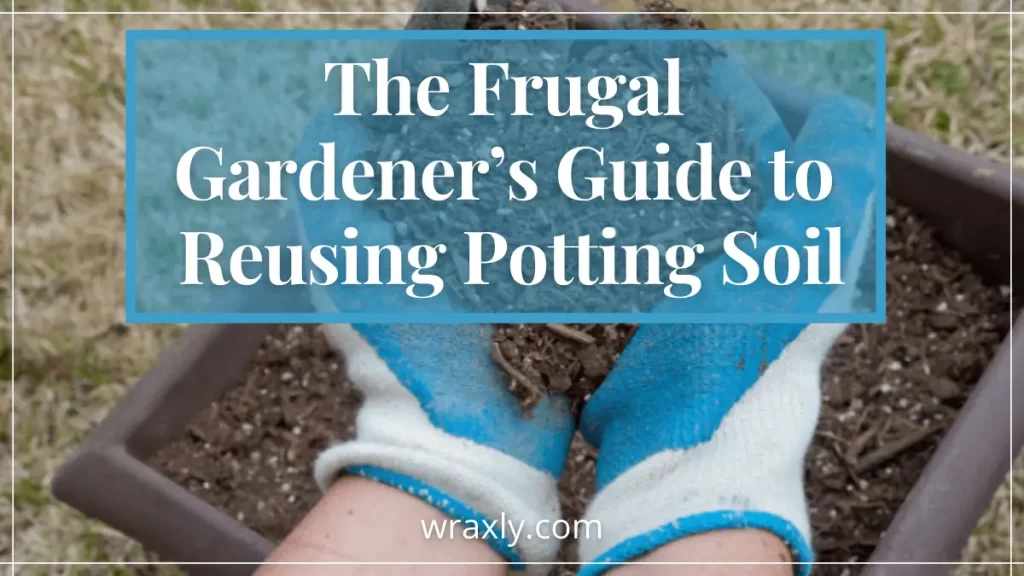
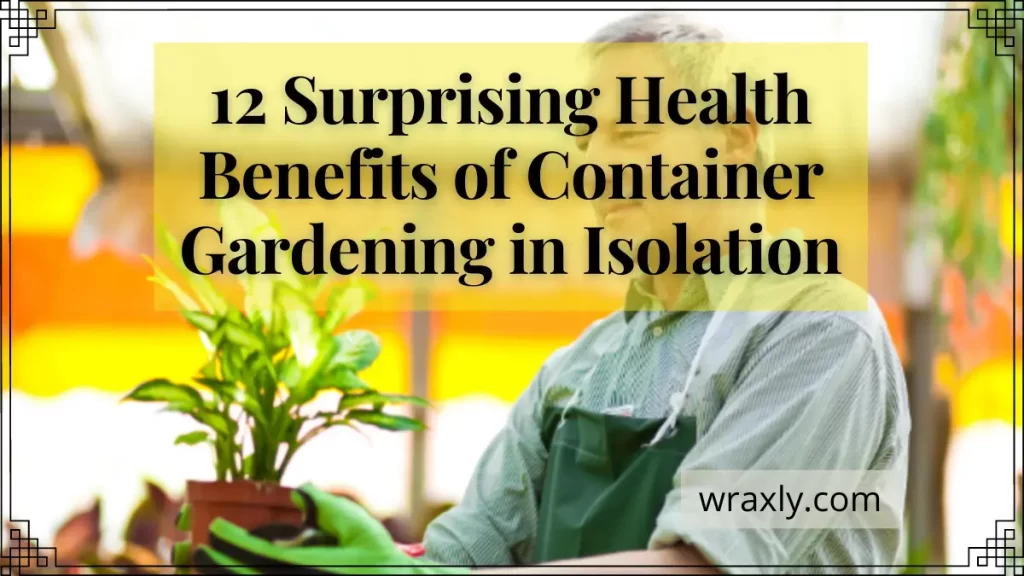
![10 Common Container Garden Mistakes to Avoid [Beginner’s Guide]](https://wraxly.com/wp-content/uploads/2021/02/10-Common-Container-Garden-Mistakes-to-Avoid-Beginners-Guide-1200-1024x576.webp)